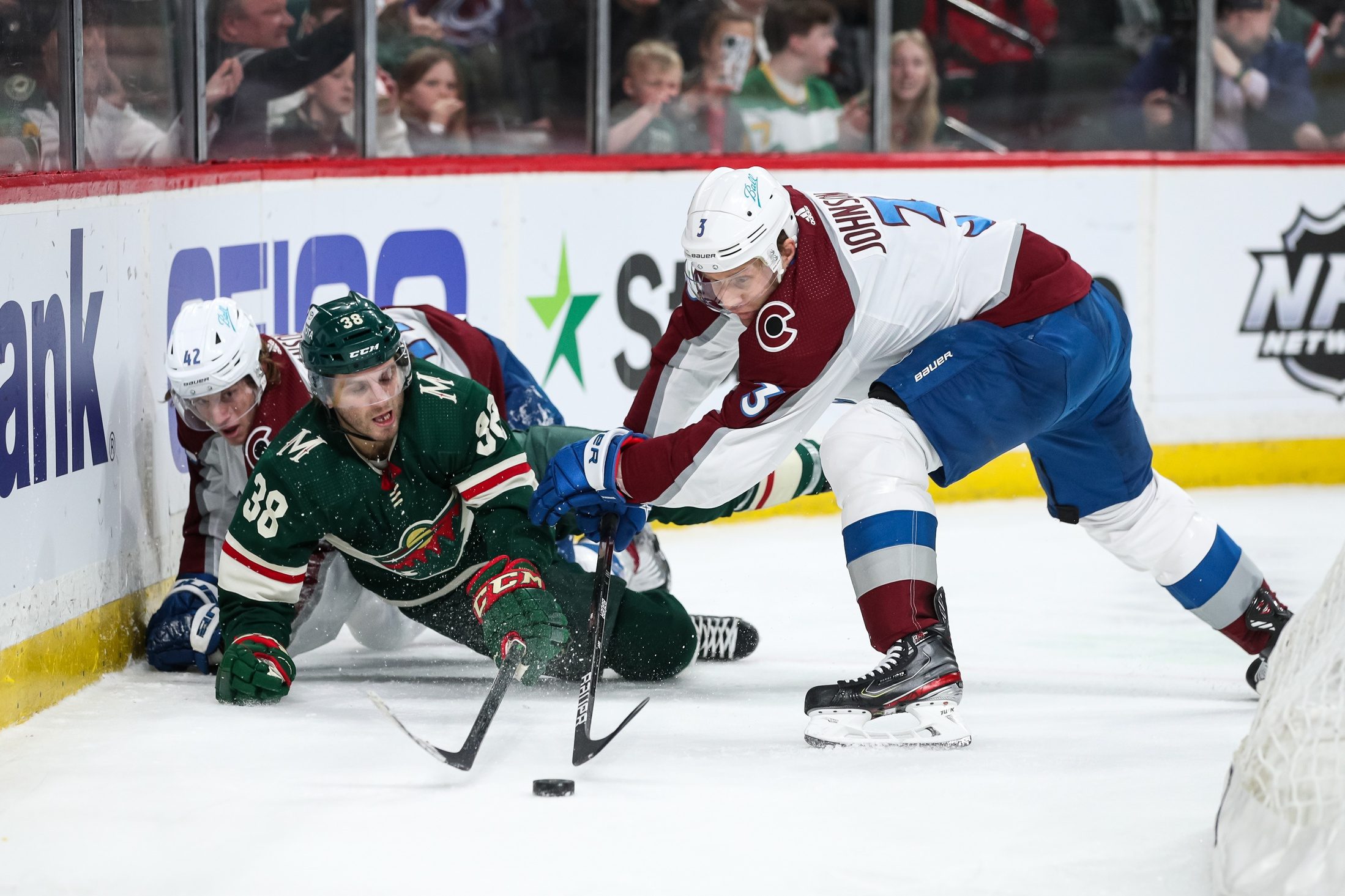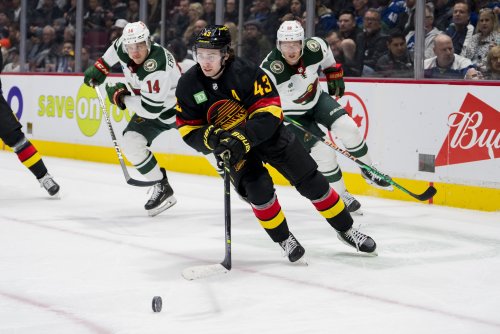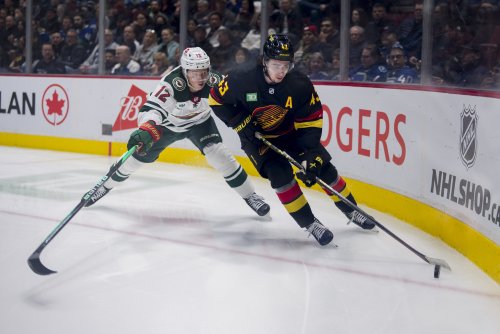
The Minnesota Wild face a harsh reality no matter how you slice it. They’ll have to build a competitive roster using only 85% of the NHL salary cap. Fortunately, the Wild return most of the same core from a team that’s fresh off a 53-win, 113-point season -- the best in franchise history.
This group still has plenty of reasons for optimism in the coming season. Still, their success largely depends on how Minnesota’s Central Division rivals fare in their pursuit of the Wild. It’s still early days in the NHL offseason, and anything can happen, but let’s look at what teams the Wild will be grappling with for the Central Division playoff spots next season.
Colorado Avalanche
The Avs are favorites to take the division after winning the Stanley Cup this year. They currently have $25.7 million in cap space with Nazem Kadri, Valeri Nichushkin, Darcy Kuemper, and Andre Burakovsky as pending unrestricted free agents. Next year, they’ll also need to work out a hefty raise for Nathan MacKinnon.
The prospect of the Avalanche returning the same core from a team that went 16-4 in the Stanley Cup playoffs is absolutely terrifying. Still, Joe Sakic has some difficult decisions coming up. They’ll likely lose an important piece or two this summer, but there’s more than enough quality on the roster to expect more of the same from Colorado next season.
St. Louis Blues
After knocking the Wild out of the playoffs last year, St. Louis will be in the mix again next season. The Blues were the best team in the NHL during the last two months of the regular season. Had they not run into the buzzsaw Avalanche in the second round, they could’ve also made a run to the Stanley Cup Final. The Blues' cap is also in a decent spot this summer. They have roughly $9 million in cap space with only David Perron, Scott Perunovich, Niko Mikkola, and Ville Husso in need of new deals.
Husso is the name to keep an eye on here. Jordan Binnington has five years left on his contract at $6 million, and Husso is undoubtedly due a big raise after carrying St. Louis at times this past season. Does Doug Armstrong fancy spending nearly $10 million (or more) on his goaltending tandem? Binnington has been wildly inconsistent over the last few seasons. Still, he’s the guy with the long-term contract, so chances are he’ll retain the starting role next season.
In all likelihood, St. Louis will challenge Colorado for the division title and could be Minnesota’s main rival in the grappling for the second spot behind the Avalanche.
Winnipeg Jets
The Jets took a step back last year. The Paul Maurice magic wore off, Connor Hellebuyck wasn’t spectacular enough to cover for a leaky blueline, and slow starts from their best players left them playing catch-up early on. The Jets have $18 million in cap space with ten roster spots to fill. Pierre-Luc Dubois could command a decent AAV. However, the rest of Winnipeg’s pending free agents are easily retainable -- or not worth an extension in the first place.
Winnipeg is unpredictable right now. Mark Scheifele and Blake Wheeler could be on the move this summer. If that’s the case, it’s difficult to see a scenario where Winnipeg makes the playoffs next year. Conversely, Scheifele and Wheeler could return with a clean slate under a new head coach, Hellebuyck could find his Vezina form again, and the Jets could march into the playoffs.
What happens next is anyone's guess. This off-season will tell us a lot about the direction of the franchise.
Dallas Stars
The Stars will be in the mix for a playoff spot again. Dallas’ biggest issue is the albatross contracts they issued to Jamie Benn and Tyler Seguin, which are dragging the team down. Benn and Seguin will combine for $19.35 million against the cap through the next three seasons. Both contracts will undoubtedly be a thorn in Jim Nill’s side as he attempts to construct a playoff team with an aging locker room.

That said, Jason Robertson, Jake Oettinger, Roope Hintz, and Miro Heiskanen all have incredibly bright futures, and the Stars have money to play with this summer. They currently have $19 million in cap space, with Robertson and Oettinger needing extensions. They’ll likely have to fill a John Klingberg-sized hole on the blueline, but that’s not something a savvy move or two can’t fix.
Klingberg is the only potential key departure. It may be wise just to let him walk instead of giving him the roughly $8 million AAV he’s reportedly asked for.
Finally, Pete DeBoer is a new face behind the Dallas bench. DeBoer replaces Rick Bowness, who, despite taking the Stars to the Stanley Cup Final in 2020, has a .391 career point percentage in 639 games. For comparison, DeBoer has a .533 career point percentage in 1015 games.
Dallas returns the same core that took the Calgary Flames to seven games in the first round this year, and they have money to improve the squad. Expect Dallas to be right there with Minnesota in the playoff hunt next season.
Nashville Predators
That leaves the Nashville Predators as the last Central Division contender next season. The Predators snuck into the playoffs this year with reliable goaltending, career years from its top forward line, and a special season from Roman Josi.
Filip Forsberg’s fate is one of the early talking points of this offseason. The Swede is fresh off a 42-goal, 84-point season and is a pending unrestricted free agent. So far, both parties have been unable to iron out an extension, and Forsberg seems poised to test the market. If Forsberg walks, that could spell bad news for a Nashville team that snuck into the playoffs last season by the skin of its teeth.
Also, how sustainable is Nashville's success from last season? Forsberg, Matt Duchene, Ryan Johansen, and Tanner Jeannot shot above 18% last season. For reference, the league average shooting percentage last season was roughly 10%. Can Nashville replicate that shooting luck next season?
While plenty can change over the next few months, there’s no denying that the Central Division playoff race will be hard-fought next season. Minnesota will field a competitive roster regardless of the cap restrictions. The only question is will that be enough to beat out the rest of its division rivals?
Think you could write a story like this? Hockey Wilderness wants you to develop your voice, find an audience, and we'll pay you to do it. Just fill out this form.








Recommended Comments
There are no comments to display.
Join the conversation
You can post now and register later. If you have an account, sign in now to post with your account.
Note: Your post will require moderator approval before it will be visible.